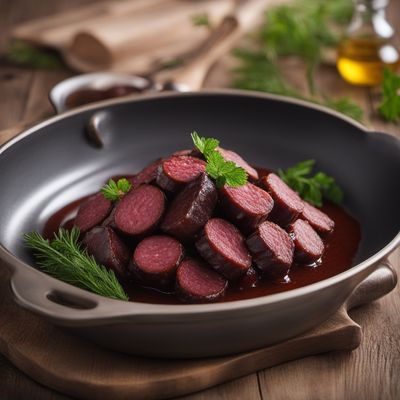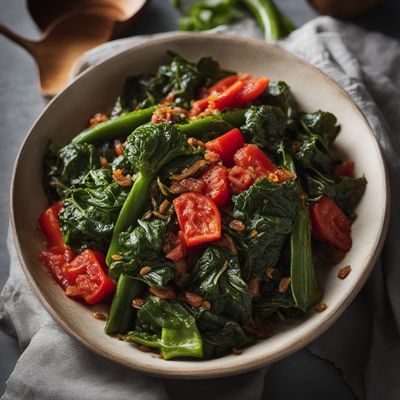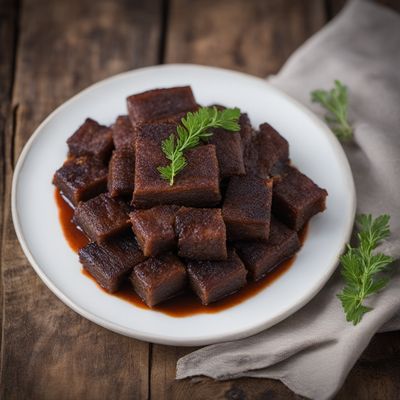
Ingredient
Edible casings
The Versatile Wrappers: Exploring the World of Edible Casings
Edible casings are thin, flexible coverings made from natural or synthetic materials that encase a variety of food products. They are commonly used in the production of sausages, hot dogs, salami, and other cured meats. These casings come in different sizes and shapes, ranging from small links to larger tubes, and can be easily filled with ground meat, vegetables, or other fillings. Edible casings provide a protective barrier during cooking, preserving moisture and flavors while adding a pleasant snap and texture to the final product. They are available in natural forms, such as collagen, cellulose, or animal intestines, as well as synthetic options like alginate or plant-based alternatives.
Origins and history
The use of edible casings dates back centuries, with early civilizations utilizing animal intestines as a means to preserve and transport food. Ancient civilizations like the Romans and Greeks were known to use intestines as casings for sausages. Over time, the art of sausage-making spread across different cultures, each adding their own unique flavors and techniques. Today, edible casings continue to be an integral part of traditional recipes and culinary traditions worldwide.
Nutritional information
Edible casings are primarily used as a wrapping material and are not consumed directly. Therefore, they do not contribute any significant nutritional value to a dish.
Allergens
Edible casings made from animal intestines may pose allergenic risks to individuals with specific allergies to animal proteins. It is important to check the source and composition of the casings before consumption.
How to select
When selecting edible casings, consider the specific recipe and cooking method. Natural casings, such as collagen or animal intestines, are ideal for traditional sausages and cured meats, providing an authentic texture and flavor. Synthetic casings, like cellulose or alginate, are suitable for vegetarian or vegan options. Look for casings that are fresh, pliable, and free from any discoloration or strong odors.
Storage recommendations
Store edible casings in a cool, dry place away from direct sunlight. Natural casings should be soaked in water and stored in a brine solution to maintain their moisture and flexibility. Synthetic casings can be stored in their original packaging, ensuring they are tightly sealed to prevent moisture absorption.
How to produce
Producing edible casings requires specialized equipment and knowledge. It is recommended to leave the production to professional manufacturers who have the expertise and facilities to ensure food safety and quality.
Preparation tips
Before using edible casings, natural casings should be soaked in water to remove excess salt and soften them. Synthetic casings typically do not require any pre-soaking. When filling casings, ensure they are evenly filled without overstuffing to prevent bursting during cooking. Use a sausage stuffer or piping bag for precise filling. When cooking, follow the recipe instructions for the specific dish, considering grilling, baking, or frying methods.
Culinary uses
Edible casings are widely used in the production of sausages, hot dogs, salami, and other cured meats. They provide a protective layer during cooking, ensuring the flavors are sealed within and adding a desirable texture to the final product.
Availability
Edible casings are commonly available in most regions where sausage-making and cured meats are part of the culinary culture. They can be found in grocery stores, specialty food stores, or online retailers.
More ingredients from this category
Recipes using Edible casings » Browse all

Homemade Spicy Turkish Sucuk Sausage
Fiery Delight: Homemade Spicy Turkish Sucuk Sausage

Homemade Longaniza Sausage
Savory Spanish Longaniza: A Flavorful Sausage Delight

Homemade Krvavice Sausage
Savory Delight: Homemade Krvavice Sausage Recipe

Russian-style Blood Sausage (Krovyanaya Kolbasa)
Savory Russian Blood Sausage: A Hearty Delight

Homemade Spanish Butifarra Sausage
Flavors of Spain: Homemade Butifarra Sausage Recipe

Lesotho-style Spicy Beef Sausage
Savory Lesotho Beef Sausage Delight

Soulful Veggie Delight
Soulful Veggie Delight: A Southern Twist on Italian Verdure al Cartoccio

Lesotho-style Liver Sausage
Savory Lesotho Liver Delight

Malian-inspired Spiced Chicken Sausage
Savory West African Chicken Sausage with a Spicy Twist

Lower Saxon White Pudding
Savory Delight: Lower Saxon White Pudding with a Twist

Lesotho-style Spiced Dried Sausage
Savory Lesotho Delight: Spiced Dried Sausage

Morcilla Blanca de Jaén
Andalusian Delight: White Morcilla Sausage from Jaén
